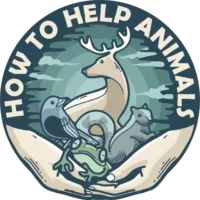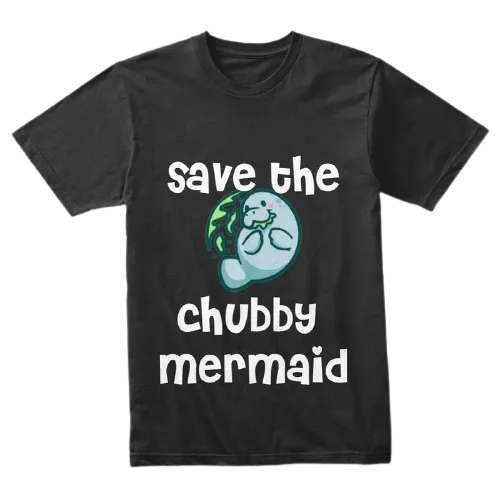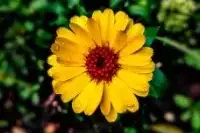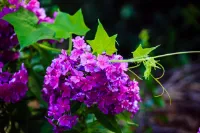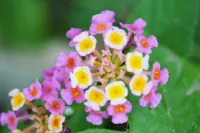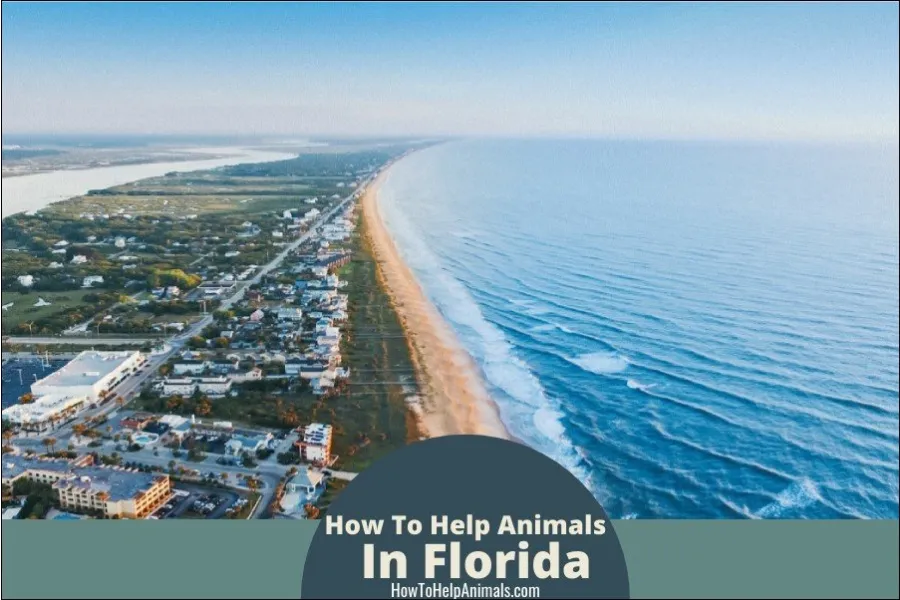
There are some animals native to Florida that are endangered in some way. In this article, I will go through six of them and show how you can help them. West Indian Manatee, Gopher Tortoise, Schaus Swallowtail Butterfly, Hawksbill Sea Turtle, Roseate Spoonbill, and Lower Keys Marsh Rabbit.
How to help West Indian Manatee in Florida
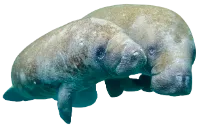
The manatee is the most well-known endangered species in entire Florida. This magnificent creature had it rough for a long and takes all help that is given to them. A west Indian manatee weighs around 990 pounds, and they need to eat 10-15% of their body weight every day.
There are some ways you can help the manatee. The most efficient way you can do today is to help to keep the shorelines and beaches clean. These beautiful animals deserve clean homes and don’t wish to hurt themselves on waste created by humans. Old fishing nets are easy to get entangled into, and they can have devastating consequences.
Another thing is to spread awareness about the manatees. Almost everyone knows about their situation, and since it’s so well-known and common, it has turned normal. Endangered animals shouldn’t be expected and should always be classified as a crisis.
Check out our manatee merch!
How to help Gopher Tortoise in Florida.
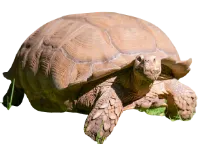
The gopher tortoise is native to the eastern US. They are considered endangered and are in a vulnerable state. The reason for endangerment is due to habitat loss through habitat destruction, fragmentation, and degradation. Mostly from urbanization and development.
Other species are dependent on them, and they are considered essential. Gopher tortoises dig burrows for 350 different species, including insects.
If you see a tortoise burrow or live near one, the best you can do is not to disturb it. Dogs and children are both interested in them and can easily frighten them. However, if you see a tortoise crossing the road, please help it and move it to the direction it was facing.
How to help Schaus Swallowtail Butterfly in Florida.
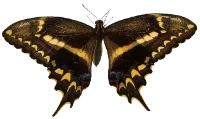
The golf resort Cheeca Lodge and the University of Florida McGuire Center for Lepidoptera Research have planted torchwood and wild lime trees to the grounds of Cheeca Lodge in order to attract butterflies and give it an area to feed, intermingle, and rest. The butterflies always have a rough time with hurricanes. Hurricanes are disruptive to butterflies and often kill plenty.
The Swallowtail is one of the rarest butterfly species in Florida and therefore protected under the Endangered species by the Federal Endangered Species Act. It’s slowly decreasing and needs all help it can get. They only repopulate once a year, and adult swallowtails appear between mid-May and mid-June.
There are some ways you can help the swallowtail and other butterflies.
Provide them with a butterfly house
A great and easy way to help the butterflies in your area is to provide them with a place to rest.
There are different varieties to choose from, and they come in both different shapes and materials and fit most people’s different houses. The best placement for a butterfly house is in a sheltered but also sunny place. They should be around four to six feet above the ground. I’ve hung some wooden houses with multiple slides for the butterflies to crawl into, and they seem to like them. The ones made from wood seem more durable than the mesh ones. You can check Amazon for the recent listings here. I’m sure you will find someone you prefer.
Provide the butterflies with flowers they like
Providing flowers to the butterflies gives them a reason to return to your home and makes your home more beautiful. There are some flowers they prefer more than others, and thankfully they are effortless to grow—both from your balcony and your garden. Phlox, Coneflower, Lantana, Bluestar, Pot Marigolds, and Black-Eyed Susan are their favorites.

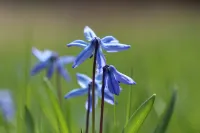

Don’t use pesticides
You shouldn’t use pesticides in your garden, and it’s better to provide your garden with biodiversity. If you don’t like aphids, attract animals that will take care of the aphids for you instead. Pesticides can contaminate the soil and can also be harmful to butterflies.
How to help Hawksbill Sea Turtle in Florida.
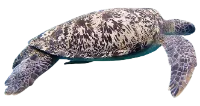
The Hawksbill Sea Turtle is critically endangered, and it’s severe. The Hawksbill, who belong to the Cheloniidae family, has a flattened body shape, a protective carapace, and flipper-like limbs adapted for swimmings in the pacific ocean.
The Hawksbills spend most of their time in shallow lagoons and coral reefs, where they search for food. They are omnivores, but most of their diet consists of sea sponges (79-95%). Their eating of the sponges is essential for the sea not to be overtaken by sea sponges.
Like other turtles species, the hawksbill is threatened by the loss of nesting due to non-native predators like mongoose, rats, and feral cats. Excessive egg collection, fishery-related mortality, pollution, and coastal development are also significant threats to the Hawksbill. Their most serious threat is the wildlife trade, where the Hawkbills shells are popular by wildlife traders for decorative purposes. In the last 100 years, the Hawksbill population has decreased by over 90%.
How can you help the Hawksbill sea turtle? There are some ways you can help them.
Reduce ocean trash
Regardless if you are close to the ocean regularly, you can still help to reduce the trash in the ocean. The best, of course, is to not create any garbage. There’s a movement called ZeroWaste, where their goal is to go waste-free. No single-use of plastics and everything is bought in bulk. It’s really impressive, and some of them have gained popularity. For example, Lauren SInger from TrashisforTossers.com and Bea Johnson from ZeroWasteHome.com. Both of them have collected their trash in one single Mason jar for multiple years.
If you don’t wish to Zero-waste, you can aim for Less-Waste.
Another way to reduce the trash found in the ocean is to clean up the beaches. A fun way to help is to rent a kayak and pick up trash floating around. Picking up trash is a fun family activity and can easily be turned into a weekly habit.
Keep the beaches dark at night.
Even the turtles want it dark when it’s bedtime. On some beaches, the light’s always on, which disrupts the sleeping cycle for turtles. It also happens gatherings spend time at the beach partying with lights and loud music and noises. If you know a beach where lights are on at night, contact the beach owner and ask them to turn them off.
Remove your stuff from the beach when you are done with them.
It’s a common sight to see stuff lying around at the beach. People leave their blankets, coolers, deck chairs, umbrellas, and things at the beach. Most of them return the next they, but some never return. Turtles can get stuck and hurt themselves walking around people’s belongings. Suggest a policy for the beach owner that they remove unattended stuff after some hours.
Report stranded, injured, or entangled sea turtles
If you see a turtle in distress, the best way is to call in the professionals who know the best way to handle it. Despite your best intentions, they can get more stressed when a stressed non-expert approaches them and might end up biting you. Instead, call Florida Sea Turtle Stranding and Salvage Network. Phone: (888) 404-FWCC (888-404-3922).
How to help the Roseate Spoonbill in Florida
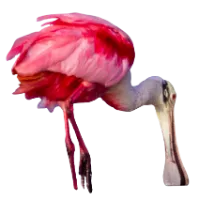
The Roseate Spoonbill is one of the most beautiful birds, according to many people. Often mistaken for flamingos, they are known for their pink-colored solid feathers. The pink color comes from the food they eat. Mostly brine shrimp, which feast on microscopic algae that naturally produce carotenoids
You can spot them in the early morning and in the evening in shallow water, where they use their spoon-like bill to scoop up prey. They usually eat minnows, insects, plants, and small crustaceans. They can be found both in fresh and saltwater wetlands.
The historical decrease of the Roseate Spoonbill is due to the highly desirable colorful feather in the Plume trade. Today, when they are endangered, they have a chance to regain their population. However, they still struggle with the availability of adequate food sources and habitat degradation.
Since the spoonbills prefer to eat their food in wetlands and mangroves, their strongest enemy right now is humans. Humans have reduced the wetlands and mangroves for long, and spots where the Roseate can eat are getting fewer each day.
Not only does the Roseate help the biodiversity, but they also bring a lot of tourists who like to take photographs of their beautiful colors.
Since it isn’t allowed to feed wildlife in Florida, you can help the spoonbills by providing materials for their nests. They live in mangrove nests with other species. Collect twigs and place them next to the trees. Thay way, the birds only need to fly up and down to collect them.
How to help Lower Keys Marsh Rabbit in Florida
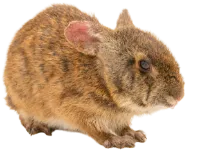
The smallest animal in this list is the Lower Keys Marsh Rabbit. This is smallest subspecies in the Marsh rabbit family. As you may know they are named after Hugh Hefner since his memorable Playboy logo resembles a Lower Keys Marsh Rabbit. The rabbit has been federally endangered since 1990, and the reason behind this has been habitat loss, fragmentation, predation by cats, and road mortalities caused by automobiles.
You can help the lower keys marsh rabbit by keeping your cat indoors, and be more aware when driving.
